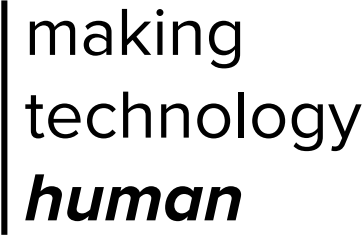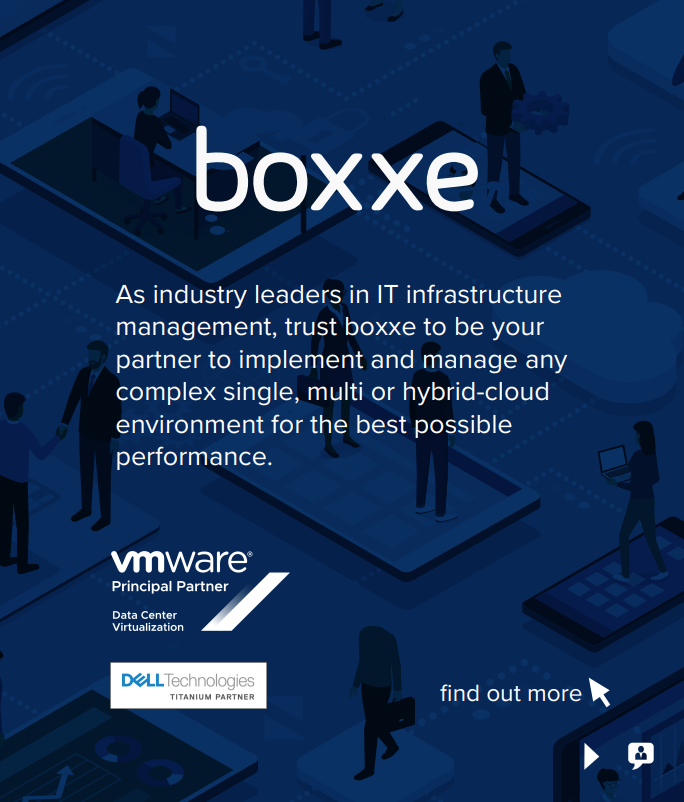

For any queries regarding our merger, please read boxxe & Total Computers – A Powerful Merger or contact our Customer Services Team on 0330 236 9429 or via email at letschat@boxxe.com.
| Introduction
IT infrastructure and cloud decision-makers are under growing pressure to support organization-wide application modernisation. The urgency comes from all directions—business executives looking to accelerate digital transformation, Dev teams looking to modernise application portfolios to support digital goals, and DevOps teams anxious to accelerate and streamline release of new software features into production.
If you are in IT Ops, you and your teams may be deploying and managing infrastructure for hundreds or even thousands of apps across data center, hosted and public cloud infrastructure environments. App modernisation strategies threaten to dramatically increase IT complexity, with a growing use of new containerised applications while keeping many traditional virtual machine-based applications—each with its own requirements and inter-dependencies with other apps.
The staggering growth of containers is a major driver of change. Nearly 85% of organisations used containers in production in 2019, an increase of 15% from the prior year, according to the most recent report by the Cloud Native Computing Foundation.1 Nearly 80% of respondents are already using
Kubernetes in production.
Today’s reality is that application modernisation almost always involves a mix of container-based workloads alongside traditional VM-based workloads. However, managing multiple, dissimilar infrastructure platforms that support a complex mix of application types is impractical, bringing unnecessary costs, risks and inefficiencies. A safer, simpler and faster path to cost-effective application modernisation is to use a consistent, software-defined infrastructure platform for all application types, leveraging common tools, skill sets, processes, policies and operations.

IT For infrastructure and operations teams, there are huge benefits in managing both containers and VMs on a single platform—less complexity, less risk, more efficient operations, to name just a few. With consistent infrastructure and operations, you can support the spectrum of application modernisation changes—and be better, faster and more agile in delivering value to all of your constituents.
If you are a decision-maker involved in IT infrastructure and operations, this is the eBook to help you create and execute on a winning, future ready strategy for application modernisation, and answer hard questions:
- How can you alleviate complexity?
- Reduce the risk of expensive and time consuming refactoring projects?
- Support digital transformation?
- Modernise apps at your own pace?
- Align IT infrastructure with business needs?
- Empower developers with automated development and release?
The answers to these vital questions, and more, lie just ahead.

| App Modernisation Brings Infrastructure Challenges
IT transformation and application modernisation are inexorably intertwined. The point of investing in modern IT is to drive digital business enablement by empowering the next generation of apps, whether new cloud-native or modernised versions of legacy apps. If your infrastructure can’t support VM and containerised architectures; if it can’t support multi-cloud and on-premises environments; if it isn’t more agile and less complex, you have to question what you are doing and why you are doing it.
Therefore, it will surprise no one that infrastructure modernisation and application modernisation were at the top of the list of IT imperatives heading into 2020. Infrastructure and network modernisation was the number one investment priority for IT decision-makers, cited by nearly 40% of respondents to a proprietary TechTarget survey of more than 3,500 IT buyers.2 Application modernisation was cited as a key development initiative by 38% of respondents, and another 30% said 2020 would be a year to modernise legacy applications to support digital transformation. Then came the COVID-19 pandemic and IT teams all of a sudden faced an even more compelling urgency to move quickly and efficiently.
Rather than moving app modernisation to the back burner, the changes caused by COVID-19 and today’s global business climate are forcing organisations to accelerate digital initiatives.
Rather than moving app modernisation to the back-burner, the changes caused by COVID-19 and today’s global business climate are forcing organisations to accelerate digital initiatives. IT teams have to respond to immediate concerns of remote workforce; adapt applications and architectures for new modes of work; and accelerate transformation to ensure their organization’s digital posture for future success.

The '3 Rs' of App Modernisation
An “all-or-nothing” path to application migration and modernisation is a tough road. Simply put, it is slow, risky, disruptive and puts way too much pressure on infrastructure and cloud teams tasked with making it happen.
Instead, development teams are looking at specific digital goals and incremental changes to applications to meet those goals. There are three basic options for modernising applications—and IT needs to support all of them.
There are three basic options for modernising applications—and IT needs to support all of them.
- Rehosting: Migrate an existing application to a cloud—public, private or hybrid—without changing code or architecture. Rehosting delivers the benefit of a cloud operating model without the cost or effort of changing the application itself.
- Replatforming: This involves containerising a traditional VM architecture. Replatforming delivers many of the key benefits of automated deployment, bringing speed and agility benefits to legacy applications that don’t need to be fully cloud-native.
- Refactoring: This involves rewriting the code to fit a cloud-native microservices architecture. A refactored application is typically containerised to utilise native-cloud infrastructure services.

A Single, Consistent Platform
The solution is a single, consistent, software-defined infrastructure and management platform that is the same in all environments, as the foundation for any type of cloud modernisation or migration. This will let you modernise IT at your own pace, based on the specific requirements of the application and the overall needs of the business.
Here are some of the characteristics to demand in a single-platform infrastructure model:
- Consistent infrastructure – software-defined with consistent management extended from the data centre to the edge and to multiple clouds.
- Application portability – with flexibility to migrate across all environments, including disparate public clouds without changing code.
- Consistent policy – tied to the applications, so security, compliance and governance are applied predictably wherever workloads are deployed.
- Familiar tools – and intellectual property built into operating processes can be utilized without having to rip up everything and start over.
- Skills path – leverage existing personnel, but provide an opportunity to build skill sets on new technology such as cloud, containers, and Kubernetes.
- All application types – need to support both VMs and containers ideally using common tools, skills, processes and operations.

| Six Reasons to Choose a Single Platform
As you address the challenges of supporting changes to your application portfolio, you can choose one of two basic options:
- Keep your existing platform to manage traditional apps, and add a new platform to manage new apps.
- Keep your existing platform, and add new capabilities that support new application types—specifically containers.

REASON 1
Accelerate Digital Transformation
Why: Digital transformation continues to be a dominant investment area. Pre-COVID-19, spending on digital transformation was expected to grow at a compound annual rate of 17.5% from 2020 to 2023, reaching more than $7 trillion.3 While COVID-19 has caused many organizations to reassess overall IT investments, digital transformation spending is less affected and is still expected to grow by more than 10% in 2020. IDC says this is because these projects “are instrumental to broader strategic business
initiatives.” 4
Key Factors: Flexibility to modernize at your own pace, choosing which applications get rehosted, replatformed or refactored. Ability to use existing skills, technologies, processes, on-premises infrastructure. Support for multi-cloud environments with maximum visibility and centralized IT control, monitoring, troubleshooting and remediation.
The Hard Way: Adding new platforms for containers and Kubernetes that are separate infrastructure than for VMs. This adds massive complexity that can impede modernisation, create new silos and limit agility, all of which are vital digital transformation issues. It puts added pressure on already stressed IT teams, and creates potential gaps between you and the developers, DevOps teams and LOB
managers you are trying to empower.
The Better Way: A single, consistent, future ready platform for all apps. You can choose the best modernis path based on the needs of the application, while reducing complexity and mitigating all kinds of underlying risk—risk of downtime, delays, security gaps or performance issues.
Within the context of digital transformation, organisations are having to move faster on many levels to drive revenue, empower remote workers, modernize supply chains and embrace digital business as not just a core competency, but as a means of survival. Your infrastructure platforms must be faster and more agile in enabling development of new
applications and services, as well as in embracing cloud-native characteristics such as mobility, self-service and elastic scalability—wherever those capabilities are necessary across your organisation’s broad application portfolios.
Your infrastructure platforms must be faster and more agile in enabling development of new applications and services, as well as in embracing cloud-native characteristics such as mobility, self-service and elastic scalability.
The idea of embarking on a one-year or two-year refactoring project, even for a business-critical application, becomes less viable at a time when speed to market and transformative change are the order of the day. However, if business demands change, using a consistent platform is safer, faster and less disruptive than any other cloud or infrastructure model.
3. “IDC FutureScape: Worldwide Digital Transformation 2020 Predictions,” IDC, October 2019
4. “New IDC Spending Guide Shows Continued Growth For Digital Transformation in 2020, Despite the Challenges Presented by the COVID-19 Pandemic,” IDC, May 20, 2020

REASON 2
Enable Remove Workforce
Why: The sudden shift to work-at-home and remote work caused by COVID-19 is emblematic of the type of agility and fluidity required of today’s businesses. Experts believe the work-from-home paradigm will continue in 2021 and beyond. According to Gallup, 25-30% of the U.S. workforce will work from home multiple days a week by the end of 2021.5
Key Factors: Delivering endpoint devices at scale; delivering consistent security protections to this remote workforce; remote management and service delivery from the IT team; modern remote collaboration tools, network bandwidth, automation, capacity and agility to ensure business resiliency.
The Better Way: A single, consistent platform that extends from the data center to the edge to multiple clouds lets you scale on demand across a choice of environments, and adapt more seamlessly and fluidly to sudden work-from-home needs. For example, virtual desktop infrastructure (VDI) has been a godsend for organizations that had it in place prior to COVID-19. But not all organizations have extra data center capacity to scale up more employees who are working from home. In fact, many companies that didn’t have VDI responded by quickly spinning up new VDI deployments in the cloud, and may choose to keep employees on digital platform, or not, when surge in demand eases.
With VDI, you can scale remote workers virtually overnight with desktops and applications served from your choice of data center or cloud, while maintaining security and data protection by keeping business-critical back-end data in the data center.
From a networking standpoint, organisations with software-defined networking (SDN) solutions have been able to use extensive automation capabilities to centrally secure a remote workforce in which many workers had zero experience working outside of the office, let alone from home.
A modern approach to networking has proven to be invaluable to Security Operation Center (SOC) teams, who themselves are now working from home and needing to consistently apply compliance and security policies across a broad range of users, devices and applications.
Looking ahead to the future state of your business, there will be even more applications and a greater need for workplace fluidity.
Looking ahead to the future state of your business, there will be even more applications and a greater need for workplace fluidity. A consistent management platform that provides choice of where to scale, will be a necessity for IT teams as well as remote workers.

REASON 3
Support All App Modernisation Options
Why: Infrastructure or cloud operations teams typically support a broad application portfolio; business-critical legacy apps such as Oracle, SQL Server and SAP; industry-specific apps such as Epic in healthcare or GEP Smart in procurement; home-grown legacy apps that may have originated in the mainframe era; as well as newer cloud-native apps that have been developed over the past few years in the public cloud.
Key Factors: Protect existing investments and processes; migrate at your own pace; focus on the needs of each application and business goal; ensure that business decision-makers have flexibility in choosing the appropriate migration model, i.e., rehosting, refactoring or replatforming; no delays, downtime or gaps in security or compliance; live up to your commitments on timing, SLAs, security, performance, business continuity, recovery, etc.
The Hard Way: The multi-platform, multi-architecture route is pretty much your basic worst nightmare: A different method, architecture, skill set, tool box, infrastructure and/or process for each application type. Separate infrastructures to manage by teams with different skill sets, multiple timeframes for each app, loss of control, lack of a centralized view, lack of consistent monitoring and traceability across all apps, different processes for IT governance. The list of risks goes on.

The Better Way: The job of the infrastructure and cloud teams is to deliver infrastructure that supports the breadth of new and traditional application types—without forcing developers or application owners to worry about the underlying infrastructure.
Business leaders and DevOps teams focus on which applications to modernise and when to do so; infrastructure and cloud operations teams focus on how to maintain service quality, ensure the quickest time to value and create the least amount of disruption.
When it comes to infrastructure, you can view application modernization as a right-sizing exercise.
When it comes to infrastructure, you can view application modernisation as a right-sizing exercise. Some apps may be rehosted to take advantage of OpEx cost models, cloud agility and elastic scalability. Others may be replatformed to take advantage of Kubernetes or containers. Still others may be appropriate for a refactoring and rearchitecting initiative.
To successfully modernise an application portfolio, it is important to recognise that not all apps are equally crucial to the business and not all strategies will be the same, even within a single organization. A single platform is key to giving the organization flexibility in deciding which modernisation path makes the most sense for each application—and when to execute that plan quickly and costeffectively with tools, skills, processes and policies common to each application, regardless of the modernisation scenario.

REASON 4
Reduce Complexity, Mitigate Operational Risk
Why: In IT today, complexity is the enemy. It forces you to steal time away from the potentially exciting aspects of your job and deal with the critical yet mundane. In is not only your enemy, it is the enemy of successful digital transformation—slowing down development, making it difficult to leverage data across the enterprise, creating roadblocks to innovation.
Key Factors: Leveraging high levels of automation across the entire infrastructure, from data centre to edge to cloud. Limiting the number of tools and infrastructure platforms, thus mitigating the impact of IT skills shortages. Managing costs, using OpEx consumption models, reducing operational risks, ensuring business continuity.
The Hard Way: If you modernize each application with a different underlying infrastructure platform, you may not be able to use existing compute, storage and network infrastructure to serve cloud applications. You risk infrastructure and tools sprawl, undetected security gaps, more silos instead of less.
If you use a different platform for new applications, you risk infrastructure and tool sprawl, undetected security gaps, more silos instead of less.
The Better Way: With a single platform you reduce complexity and mitigate operational risk by:
- Using consistent (and familiar) tools, technologies, processes and operations across all operations and environments—data center, edge and multiple clouds.
-
Leveraging the knowledge, experience and expertise of existing teams without having to bring in a whole group of individuals.
-
Reducing the time, cost and risk required to migrate to the cloud via any type of modernisation effort, whether rehosting, replatforming or refactoring.
-
Maximising existing infrastructure and pay-per-use cloud resource utilisation, and maximise investments in hardware and software.
- Using extensive automation to simplify application deployments, eliminate manual process and use IT personnel resources more strategically.
- Cost-effectively bridging the gap between infrastructure teams and developers by providing a cost-effective platform that allows self-service, cloud elasticity and support for VMs, containers and Kubernetes orchestration.

REASON 5
Leverage Future-Ready Infrastructure
Why: Application modernisation is a journey, not an all-at-once proposition. It is both VMs and containers. It is horizontally focused infrastructure versus vertically focused infrastructure. It is maximising choice at all levels—the locations of where your apps run, the underlying infrastructure and hardware, and the cloud/service providers you choose.
Key Factors: Full-stack agility and security between on premises, public cloud and edge environments. Automated, software-defined management platform using proven tools. Intrinsic security. The ability to scale quickly. The flexibility to deploy modern hardware such as software-defined networks and NVMe flash storage—without having to do forklift upgrades.
The Hard Way: Solutions that don’t take advantage of existing skill sets, processes and proven technologies. Solutions that are complex to install and manage, that potentially add silos, that make it difficult to integrate all of the organisation’s data and applications to create competitive advantage and support business transformation.
The Better Way: A single platform reduces risks and allows you to have a future ready infrastructure that can support application modernisation at every stage of the journey. With the right solution, you can reduce risk during migrations and enhance business continuity and security through the application’s lifecycle.

The future ready model typically means software-defined infrastructure, including servers, storage and networks, delivered as an easy-to-deploy, easy-to-upgrade hyperconverged infrastructure. This way, the hardware is not a gaiting factor in modernization; it is a facilitator.
For example, modernizing applications with an SDN allows for uniform security policy, controls and network abstraction, enabling seamless connectivity and built-in security. With an SDN, you can use automation to extend consistent policies across application environments and simplify Day 0 to Day 2 operations, while delivering the agility and performance required to run modern applications.
When networking and security are defined and consumed in software, administrators and developers can work at the same speed and drive toward common business objectives. A consistent modern infrastructure model also enables IT to take advantage of intrinsic security protections that are integrated within the stack. At the network layer, for example, security policies travel with workloads, independent of where the workloads are located in the network topology. Micro-segmentation and granular security are delivered to each workload.
When networking and security are defined and consumed in software, administrators and developers can work at the same speed and drive toward common business objectives.
In supporting and securing remote workers and empowering SOC teams, you can manage policies and automate capabilities such as network and device encryption, data protection, multi-factor authentication, identity management, governance and compliance. For business continuity and disaster recovery, you can improve uptime and ensure high availability to meet today’s application and business needs. Future-ready features include active-active metro clusters; asynchronous data replication to secondary sites; automated failover, and non-disruptive testing.

REASON 6
Empower Developers with VMs and Containers
Why: Containers are the foundation for next-generation application development and modernisation. Containers allow developers to deploy their applications with portable, lightweight packaging. Cloud enables programmatic control of infrastructure virtually and remotely. The combination of containers, cloud infrastructure, and integrated CI/CD tools allows developers to ship rapid incremental changes to their applications. Nearly three quarters of organisations plan to containerise existing applications and more than 40% plan to build all of most of their new apps as containerised apps.7
Key Factors: Kubernetes is the platform of choice for container orchestration; three quarters of IT decision-makers and developers plan to use Kubernetes for application modernisation.8 IT infrastructure must support Kubernetes and VMs. Developers are looking for self-service; simple scalability; infrastructure through integrated development and deployment tools; and the freedom to write and deploy code with similar processes whether it ends up in a VM or container.
If you treat the management of containers and VMs as separate operational processes, you risk fracturing your teams—Dev and Ops —into factions that don’t work towards a common goal.
The Hard Way: Separate platforms for containers and VMs. This approach adds IT complexity and costs and adds risk and complexity in managing security, compliance and IT governance. It forces different release cycles and processes for different applications. It complicates moving apps and services from development to production. It limits automation that may only apply to VM or container workloads, but not both. In many ways, it creates more problems than it actually solves.
The Better Way: A single consistent architecture for containers and VMs. Most organisations will have VM apps residing alongside containerised apps in production. Organisationally, if you treat the management of containers and VMs as separate operational processes you risk creating additional silos and fracturing your teams—IT, development and operations—into factions that don’t always work together towards common goals.

You should also take into account the importance of centralised, consistent management for Day 2 operations---patches, protection, etc. The world of Kubernetes is very dynamic, as are many open-source environments, with frequent new releases. If infrastructure teams are not managing these centrally and consistently as part of their broader IT management platform, there is a greater risk of security gaps and other problems.
Finally, it is critical to remember that the platform you use for application modernization should take advantage of modern infrastructure processes, particularly in critical areas such as network automation. SDN, again, is one of the important infrastructure factors. With SDN, you can leverage micro-segmentation and load balancing to connect and protect microservices and workloads running in containers and VMs.

| What to Look For in a Single Platform Solution
If you’re a member of the infrastructure or cloud operations team, you and your colleagues are likely facing fundamental, bet-your-future types of questions:
- How do you deal with application and infrastructure complexity and successfully deliver on digital business goals?
- How do you leverage existing investments and extend what you have today to cause the least disruption when modernising apps?
- How do you evolve to a cloud operating model that supports all applications, new and old, and works consistently across private or public cloud environments?
- How do you seamlessly and securely manage traditional VM architectures and newer architectures for containers, Kubernetes and microservices?
- How do you take advantage of modern infrastructure technologies, such as software-defined networking, HCI, automation and artificial intelligence to deliver on the promise of a future-ready business?
VMware Cloud Foundation is the hybrid cloud platform for managing VMs and orchestrating containers, built on full-stack hyperconverged infrastructure technology. With VMware Cloud Foundation, the same software-defined infrastructure stack in private cloud deployments is the core technology of VMware-based public clouds. VMware Cloud Foundation is different than traditional public clouds. The software-defined infrastructure and management stack are layered on top of any physical infrastructure. Applications can run on this common infrastructure no matter where the infrastructure sits.

Key properties of this model include:
- Hybrid Cloud: By deploying and managing workloads on VMware Cloud Foundation, you get consistent infrastructure and operations across private cloud, public cloud and edge environments. You can manage container-based workloads and VMs on a single platform, with a single cloud operations model for consistent service delivery and consumption.
- Kubernetes: VMware has embedded Kubernetes into vSphere. This means all the tools in the VMware stack that are optimized for vSphere, are now also optimised for Kubernetes. Capabilities such as VMware Tanzu™ Mission Control™ give developers self-service access to Kubernetes with intrinsic security and policy protections.
- Application Mobility: Because VMware solutions span public clouds as well as on-premises, businesses have unprecedented freedom of choice as to where to deploy applications. They can also migrate applications without the cost and time of refactoring code. And they can choose where applications best reside based on business, compliance, or technical factors such as user proximity to differentiated services.
With a VMware software-defined infrastructure and management stack, applications can run on consistent infrastructure no matter where workloads are deployed.
- Consistency: VMware solutions are consistent at many different levels of the stack. For example, CloudHealth provides cost and reporting consistency across clouds and on-premises vSphere. VMware Tanzu provides consistent Kubernetes and platform as a service (PaaS) environments and management.
- Software-Defined Networking: VMware Cloud Network provides network capability and management consistency across clouds and on-premise vSphere. VMware NSX provides full-stack networking and security for vSphere with Kubernetes and VMware Cloud Foundation. NSX provides full-stack networking for VMs, containers and bare metal. NSX provides load balancing, firewall, and micro-segmentation that help secure a network without a hard perimeter.

VMware is the only vendor that has the installed base and software platform to provide this kind of comprehensive and consistent modernisation path for applications, delivering common tools, processes, operations and policies from the data center to the edge to multiple clouds.
For most organisations, the bulk of business-critical legacy apps are already in VMware—with all of their inter-dependencies and all of the work that has gone into building and updating them through the years.
Now that VMware has embedded Kubernetes in VMware Cloud Foundation, customers have a simple modernisation and migration path for all apps—legacy and cloud-native—that will involve less costs, risk and disruption. This path will accelerate modernization initiatives and simplify any model—
rehosting, replatforming or refactoring. You can choose the modernisation method that makes sense for each application without having to rip up everything in place. You can modernise at your own pace with the confidence that a single platform can handle them all.
With a VMware software-defined infrastructure and management stack, applications can run on consistent infrastructure no matter where workloads are deployed.
In addition, VMware understands the challenges of enterprise IT and the impact modernisation can have on complexity, security, resiliency, availability, costs and other business functions that are table stakes for digital transformation.
With VMware Cloud Foundation, you can confidently move forward with digital transformation and support the changing needs of your workforce.

| Additional Resources
Realise the value of VMware Cloud Foundation today. Calculate your estimated cost savings and get a free Total Cost of Ownership comparison report for your organization in minutes.
Short on time? Download the VMware Cloud Foundation Business Case to get estimated OpEx and CapEx savings across key industries and segments.
Alternatively, learn more about VMware Cloud Foundation.


boxxe makes the global workplace habitable from a technological and human perspective. One does not overrule the other. They function efficiently and effectively together.
We believe in reciprocal adaptation: adapting technology to people and people to technology.
We aim to make organisations the best they can be through technology and by giving every person, wherever they are in the world, the confidence to use that technology to drive efficiency and effectiveness in every aspect of their working lives.
How can we help to make you the best you can be?
0330 236 9429


VMware, Inc. 3401 Hillview Avenue Palo Alto CA 94304 USA Tel 877-486-9273 Fax 650-427-5001 vmware.com
Copyright © 2020 VMware, Inc. All rights reserved.
This product is protected by U.S. and international copyright and intellectual property laws. VMware products are covered by one or more patents listed at vmware.com/go/patents. VMware is a registered trademark or trademark of VMware, Inc. and its subsidiaries in the United States and other jurisdictions. All other marks and names mentioned herein may be trademarks of their respective companies.
Item No: VMware Application Modernization 10/20
This content was commissioned by VMware and produced by TechTarget Inc.










